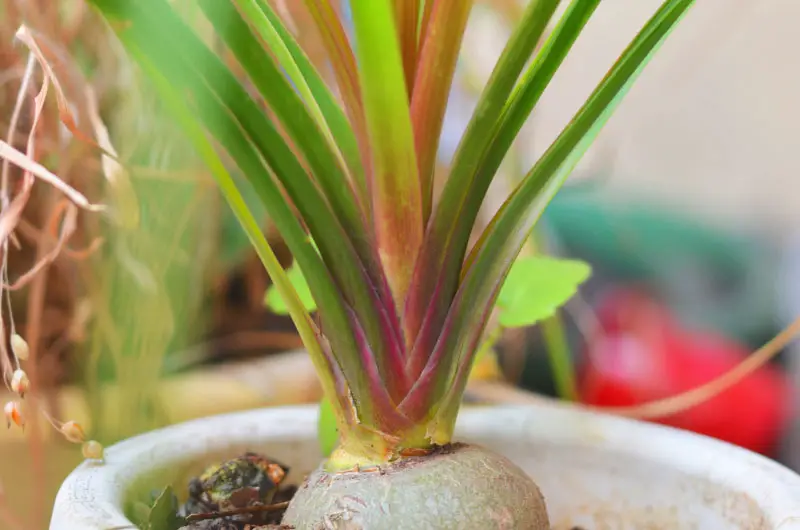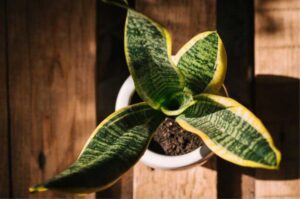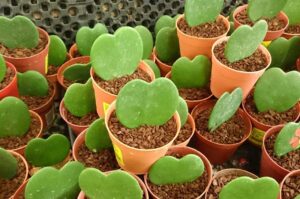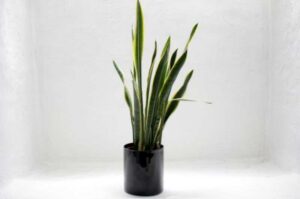How to Tell If You’re Overwatering Your Ponytail Palm?
Everything seems so simple when you’re caring for a Ponytail palm. After all, we’ve all had houseplants before. They need water every once in a while and sunlight most of the time.
So you water them when they seem thirsty, put them by a window when it gets dark out, and give them some fertilizer every once in a while. Easy!
In reality, though, caring for a Ponytail palm can be tricky. They are slow-growing indoor plants that require specific light and moisture conditions to thrive. If left un-watered or under-watered, these plants will dry up and die much quicker than if you keep your plant happy with regular watering and humidity.
Here are a few things that will tell if you’re overwatering your Ponytail palm:
Ponytail palm leaves turn yellow when plants are overwatered (first symptoms). When the Ponytail Palm gets too much water, its vigor becomes saturated and begins showing signs of distress, including the browning of its leaves. Also, the plant will exhibit signs of root and stem rot. Stem rot occurs first when your Ponytail Palm is left to sit in standing water, which results in yellowing leaves.

Signs You’re Over-Watering Your Ponytail Palm
You may be over-watering your Ponytail palm if you notice the following signs. Ponytail palms have large and shallow root systems, so the soil will get very wet quickly if you over-water it.
Check for the following signs to check if you are overwatering your Ponytail palm:
- First and foremost, you’ll notice that the soil around the base of your palm is very moist and soggy.
- If your plant is overwatered, it can’t take in nutrients from the soil. The leaves will start to droop and turn yellow as a result.
- If your plant has been overwatered for a while and the roots are entirely soggy, you may notice that the leaves turn brown or black. It is due to root rot caused by bacteria growing in the waterlogged soil.
- In addition, you may notice that the leaves on your plant are wilting.
- Moreover, if you’re watering your Ponytail palm too often, you can expect the soil around the base of the plant to become compacted. It happens because you’re watering so much that the roots can’t break down the soil. You’ll notice this because your plant will start to lean.
- If you are applying excess water, then the trunk may absorb the extra water and become soft. If it will stay for a longer time, then the stem will start rotting and the plant may also die.
How to Stop Over-Watering Your Ponytail Palm?
The leaves of an overwatered Ponytail may turn yellow, its base may feel soft and mushy, and if you inspect its soil, you might even see some mildew growing on the top. Whether you are overwatering a Ponytail with too much water or if it is planted in a potting mix that offers terrible drainage, the results are the same: Overwatering causes root rot and stem rot.
If Ponytail plants are overwatered to the point that leaves are turning yellow and brown and are missing enough chlorophyll to generate the energy needed for flowering, here are a few things you can do.
- If you realize you’re over-watering your Ponytail palm, the first step to fixing it is to stop watering it! It will give the soil time to dry out, and it will also give the roots time to break down the soil around them. These two things will help make the plant’s roots healthier and more efficient at taking up water.
- After a couple of days of letting the soil dry, you can generally water your Ponytail palm. However, if you catch yourself over-watering your plant again, stop watering it for a couple of days to let the soil dry.
- In addition to letting the soil dry out, you can also help prevent over-watering by using a pot with a hole. Ponytail palms grow best in large pots but can be very water-intensive. Using a pot with a hole in the bottom allows excess water to escape into the tray below. This will help prevent the soil from staying too wet.
- Another essential step in ensuring your Ponytail palm isn’t over-watered is checking your humidity levels. Soggy soil will keep the roots of your palm wet and unable to take in nutrients. This can eventually lead to root rot.
- On the other hand, if your humidity levels are too high, you can damage your plant by over-watering it. You can prevent this by controlling the humidity levels in your home. You can do this by opening up windows and running fans, and removing any excess water from the tops of your plants.
- Check the Light Exposure- Like any other indoor plant, the Ponytail palm needs a certain amount of light. If your plant doesn’t get enough light, it will become leggy and grow toward the light.
- If you notice this, you may keep your plant in too much shade and not give it enough light to thrive. On the other hand, if you notice that your Ponytail palm is leggy and not growing towards the light, you may be keeping the plant in too much light.
- Keeping the plant in too much light can cause the leaves to burn and turn black. The leaves will also stop growing and will be very fragile, making cleaning and water difficult.
Tips to take care of your Ponytail palm
Here are a few tips to take care of your Ponytail palm
- It is not a plant that you would want to keep away far from the window. Give your plant the brightest light that you can indoors.
- As far as watering is concerned, let your potting mix completely dry before watering again. After that, water your plant thoroughly until water escapes the drainage holes at the base. Never let your plant sit in water; otherwise, you’ll quickly get root rot.
- For the potting mix, use 2 parts of a cactus or succulent mix and 1 part of quarter-inch pumice. Pumice is just a volcanic rock added to plants that need to dry out quickly and require sharp drainage.
- These plants are not heavy feeders; you can fertilize them two or three times during the growing season.
Common problems of Ponytail palm
- The most common problem of these plants is the lower leaves turning yellow and the brown tips of the leaves.
- Another problem that most people have with these plants is when the top of the leaves flatten out. A healthy, well-grown plant should have lovely arching leaves. But if the leaves are flattening out, immediately check out the potting mix. Has it dried out excessively for a longer duration? Or you may have left the plant wet for too long, or maybe you reside in a colder area.
Conclusion
Ponytail palms are beautiful plants that can add a lot to any space. However, they are reasonably easy to care for as long as you remember to keep the soil moist and the light exposure correct. If the leaves on your plants turn brown, it may be a sign of too much water or too little.
Droopy leaves or squishy bottoms on your plants are two more signs of excess watering.
Yellowing leaf tips are the first sign of overwatering for most indoor plants. So is in the case of Ponytail palm.
Browning of foliage starting from the tips is a specific indication of underwatering. Likewise, thin, spongy, and buggy leaves are signs your plants are not getting enough light.
Ponytail palms are a great indoor plant and relatively easy to take care of, but the turn is when the tips of the leaves turn brown. If overwatering is a problem, you will also notice the Ponytail palm’s trunk becoming spongy and limp and roots starting to degrade and developing root rot.
If your Ponytail palm remains parched even after showing signs of falling, the next thing that happens is the leaves will start turning brown and crisp. But, as mentioned, excessive watering, which leads to soaked soil, will result in the leaves of your Ponytail palm turning yellow.






